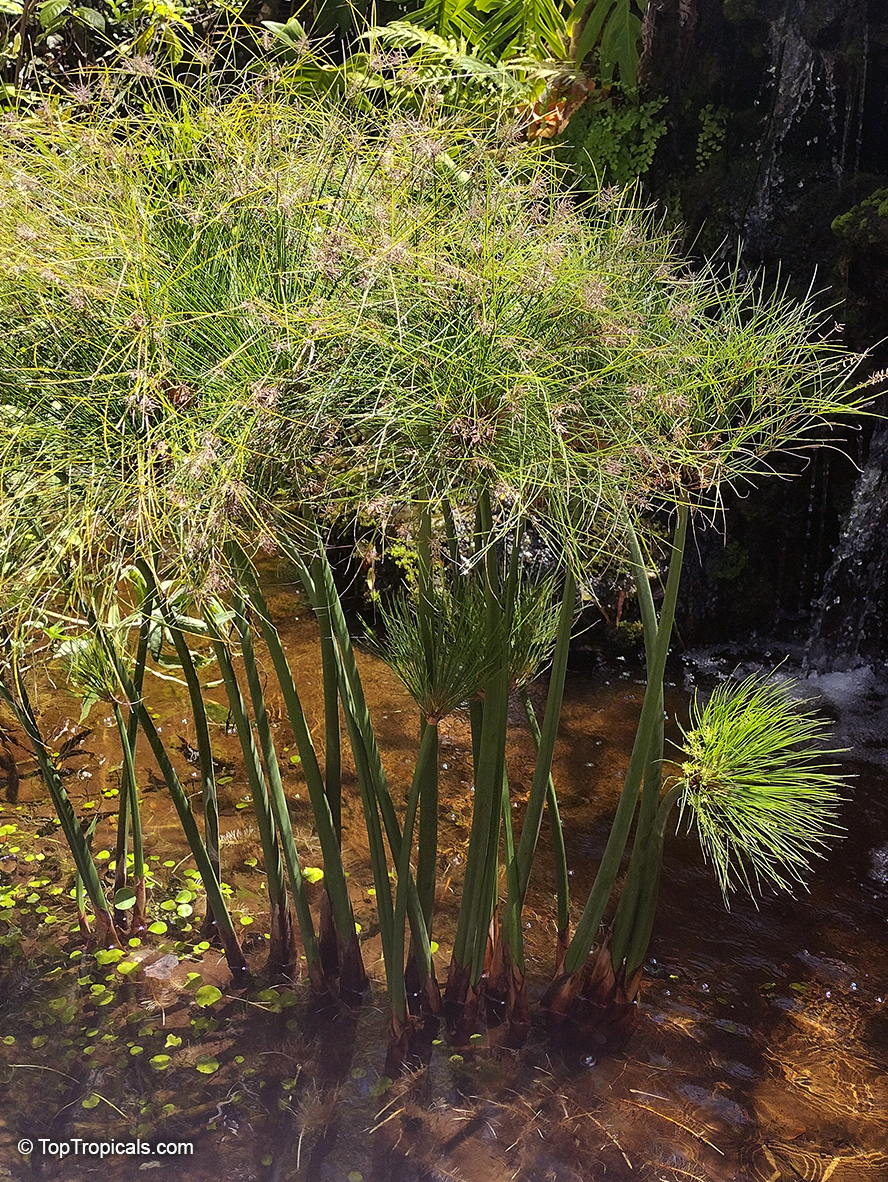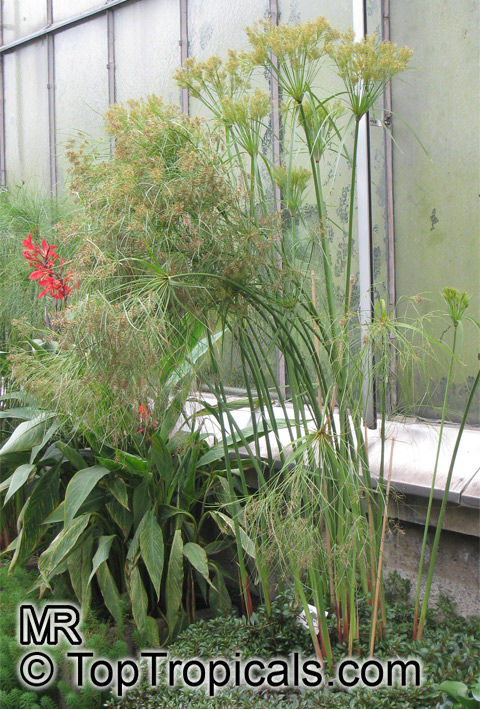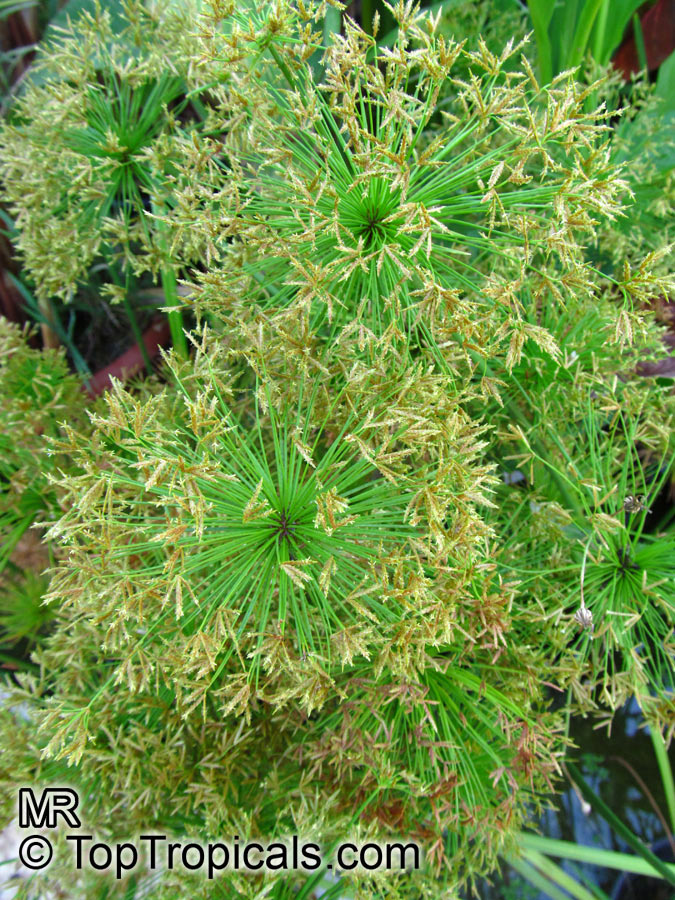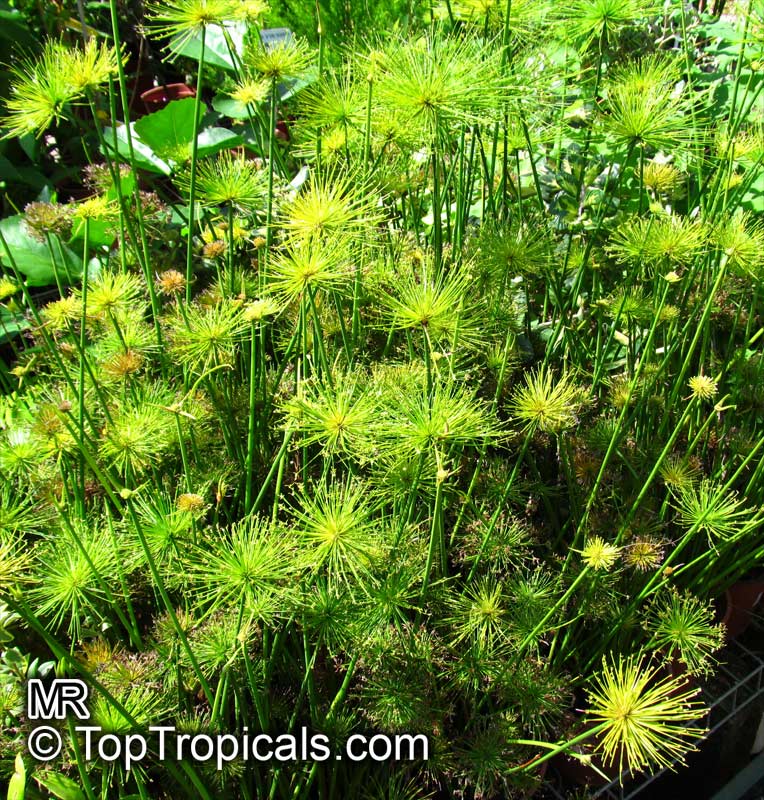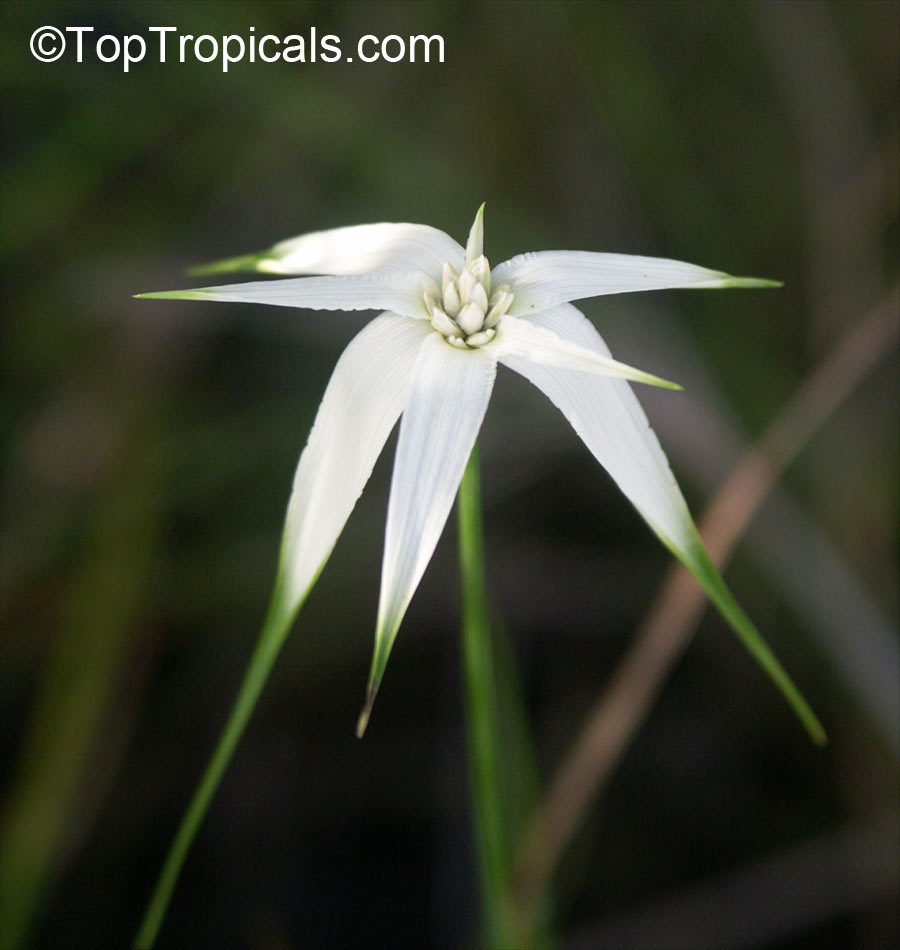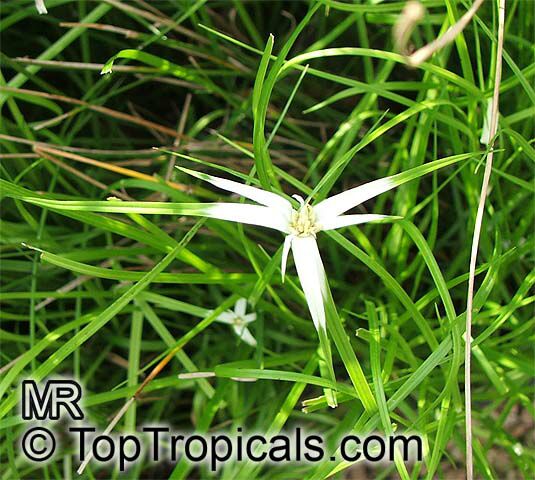Cyperaceae - Botanical Family
Top Tropicals Plant Encyclopedia
| Number of plants found: 5 |
Botanical name: Cyperus alternifolius
Common names: Papyrus, Umbrella Sedge, Galingale
Family: Cyperaceae
Origin: Madagascar, Reunion Island, Mauritius






Cyperus alternifolius, commonly known as Papyrus or Umbrella Sedge, is a small shrub native to Madagascar, Reunion Island and Mauritius. This ornamental plant grows up to 2-5 feet tall and is highly prized for its foliage providing a light, airy and billowy effect. It is most successful when grown in full sun to semi-shade and does best in bog or aquatic soils that are wet. It is tolerant to seasonal flooding and requires regular waterings to thrive.
In terms of plant care, Cyperus alternifolius is an easy-to-care-for plant that is often low-maintenance. During the summer its foliage should be given a deep watering at least once a week. In the winter, waterings can be reduced to around once a month depending on the local weather conditions. For optimal growth, fertilize every three months during the growing season with a bloom-boosting fertilizer.
When grown in colder regions, Cyperus alternifolius can do well in a pot where it can be brought indoors during the winter months. Make sure to water it regularly and move it outside during the warm months to benefit from the sunlight and give the plant the chance to spread its roots. Additionally, use a soil specifically designed for bog and aquatic plants. This helps the soil retain its moisture and prevents it from becoming waterlogged in winter.
Use this plant along the shores of lakes, ponds, and slow moving streams to create masses of hazy light green foliage. A single clump can serve as a focal point, or use in pairs to frame a scene. When used in smaller pools and fishponds, grow Papyrus in containers placed underwater.
Botanical name: Cyperus haspan
Common names: Dwarf Papyrus, Sharp Edge Sedge, Haspan Flatsedge
Family: Cyperaceae
Origin: Mexico





Botanical name: Cyperus papyrus
Common names: Papyrus, Paper Reed, Nile Grass
Family: Cyperaceae
Origin: Africa




Cyperus papyrus forms a grass-like clump of triangular green stems that rise up from thick, woody rhizomes. Each stem is topped by a dense cluster of thin, bright green, thread-like rays around 10 to 30 cm (4 to 10 in).
Papyrus sedge forms vast stands in swamps, shallow lakes, and along stream banks.
In Ancient Egypt, papyrus was used for various of purposes such as baskets, sandals, blankets, medicine, incense, and boats including for making papyrus.
All parts of the Sedge, apart from the roots, are annual, and die every winter. New ones grow in the spring. The dead parts remain in the water and do not rot, so that large quantities of organic matter accumulates. The organic matter is compressed and turns into peat.
Botanical name: Cyperus sp.
Common name: Flatsedge
Family: Cyperaceae
Hardiness: 30°F




Long on beauty and history, papyrus has been known and used by Man for millennia. Soft green clouds of papyrus lined the Nile River during the time of the pharaohs. In the Bible the infant Moses was found among the bulrushes, as Cyperus papyrus is also called. Ancient Egyptians kept records of their pyramid building activities on papyrus sheets, from which we get the word "paper." Today papyrus is appreciated for its beauty and is often used in ornamental landscapes especially in pools, ponds and containers. Umbrella sedges inxabit damp ground and swamps, and as house-plants, too, they like to have wet feet. The characteristic mark of most of the Cyperus species is an umbrellalike head of leaves. The insignificant little umbellate flowers appear in almost all year long. There are some 600 species, of which Cyperus alternifulius, the subspecies ssp. flabelliformis, Cyperus gracilis, and Cyperius haspan are important as house plants. Now and then it is sold as a fully grown plant, but you can also grow it from seed.
Use this plant along the shores of lakes, ponds, and slow moving streams to create masses of hazy light green foliage. A single clump can serve as a focal point, or use in pairs to frame a scene. When used in smaller pools and fishponds, grow papyrus in containers placed underwater.
Botanical names: Dichromena sp., Rhynchospora sp.
Common names: Star Grass, Star Rush, White Topped Sedge
Family: Cyperaceae







The "leaves" are actually large bracts that surround the less-conspicuous inflorescence. The bracts are white at the base, becoming green at the tips.
Use link to repeat this search:
https://toptropicals.com/cgi-bin/garden_catalog/cat.cgi?search_op=and&keyword_op=and&language=e&family=Cyperaceae&number=10
&no_change_lang=1&user=tt&sale=1&first=0













